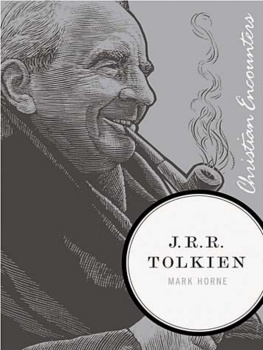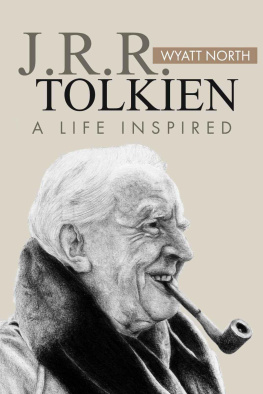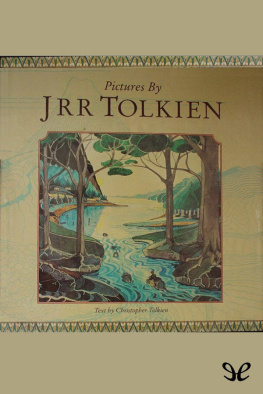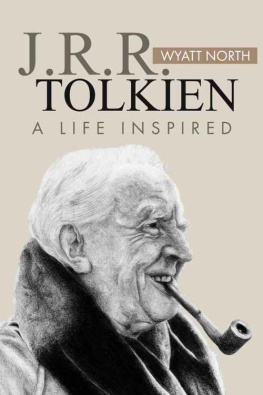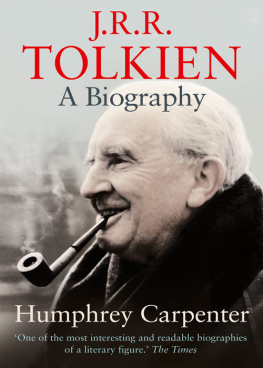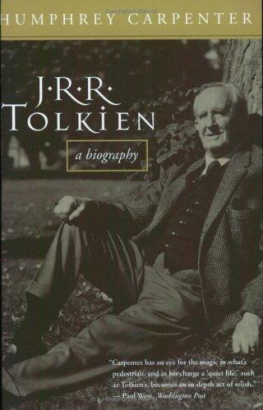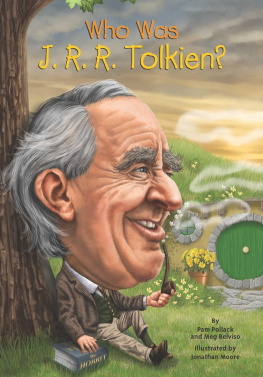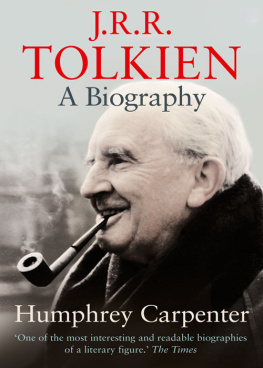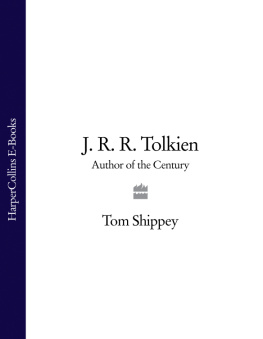
CHRISTIAN ENCOUNTERS SERIES
J. R. R.
TOLKIEN
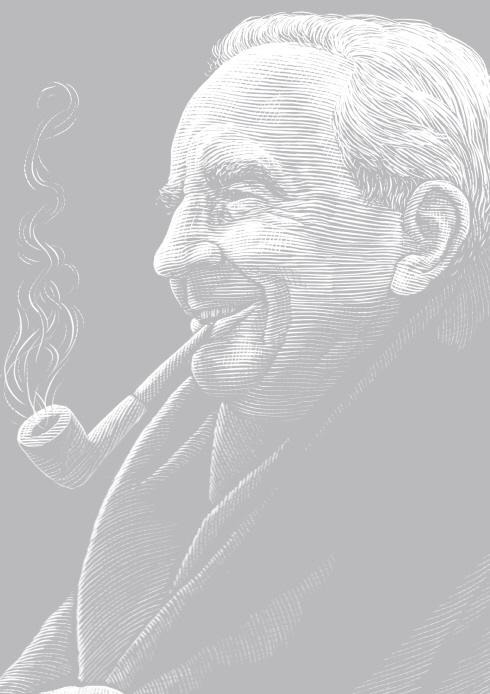
CHRISTIAN ENCOUNTERS SERIES
J. R. R.
TOLKIEN
MARK HORNE

2011 by Mark Horne
All rights reserved. No portion of this book may be reproduced, stored in a retrieval system, or transmitted in any form or by any meanselectronic, mechanical, photocopy, recording, scanning, or otherexcept for brief quotations in critical reviews or articles, without the prior written permission of the publisher.
Published in Nashville, Tennessee, by Thomas Nelson. Thomas Nelson is a trademark of Thomas Nelson, Inc.
Thomas Nelson, Inc., titles may be purchased in bulk for educational, business, fund-raising, or sales promotional use. For information, please e-mail SpecialMarkets@ThomasNelson.com.
Unless otherwise noted, Scripture quotations are taken from the NEW KING JAMES VERSION. 1982 by Thomas Nelson, Inc. Used by permission. All rights reserved.
Library of Congress Cataloging-in-Publication Data
Horne, Mark.
J.R.R. Tolkien / Mark Horne.
p. cm. -- (Christian encounters series)
Includes bibliographical references.
ISBN 978-1-59555-106-1
1. Tolkien, J. R. R. (John Ronald Reuel), 1892-1973Religion. 2. Authors, English20th centuryBiography. 3. Christianity and literatureGreat BritainHistory20th century. 4. Christianity in literature. I. Title.
PR6039.O32Z66137 2011
823.912dc22
[B]
2010040452
Printed in the United States of America
11 12 13 14 15 HCI 6 5 4 3 2 1
To Jennifer, Calvin, Nevin Evangeline, and Charis.
Not all those who wander are lost.
CONTENTS
T he middle-aged man, a war veteran, a husband, and a father, sat making marks on papers that covered his desk in his warm study. Outside his window he could see the green suburban countryside, but he could not afford the time to go outside and work in the garden that he loved, or even simply walk about, though he loved these outdoors of England. There was no time.
As any other father, J. R. R. Tolkien needed to provide for his growing family. While he was happy being a professor at Oxford and the work it involved, he had many financial needs as his familys provider that stretched his income to the breaking point. He needed to do more. So, when others had vacations or simply enjoyed the relatively slow summer days at Oxford, Tolkien graded exams as an external examiner for universities in Britain and Ireland, receiving the essay exams of students, grading them, and sending them back. He was more than qualified for the work, having acquired the advanced education that it required, but it was academias version of manual labor. He later remembered the everlasting weariness of that annual task forced on impecunious academics with children.
That summer day, in the midst of the dreary boredom of marking papers, Tolkien did something that changed his life. Working diligently on marking one of many exams, Tolkien came to the bottom of a page in the exam book, expecting more handwriting to read, evaluate, and mark when he turned it over. But the next page was blank. And for some reason he took up his pen and wrote across the blank space, In a hole in the ground there lived a hobbit.
He had no idea what a hobbit was. When he did define a hobbit, it would change the literary world.
J. R. R. Tolkiens The Hobbit and The Lord of the RingsThe Fellowship of the Ring, The Two Towers, and The Return of the Kingare some of the best-known and most widely read books of the twentieth century. In 2000, it was reported that The Hobbit had stayed in print for sixty years, selling more than forty million copies. From these, there are films and branded products.
While these books and products are favorites among the general public, some of his readers may not know that throughout Tolkiens life, he dealt with crises and situations and responded to them in a way that honored God.
Recognizing Tolkiens faith is important to understanding his works. Being raised by his mother in the Christian faith was something he rememberedand appreciatedall his life. He was grateful to the Christians who aided her in his upbringing. As a high school and college student, he was already concerned about how his Christian faith might be involved in his artistic ambitions. He later joined with other Christian friends, especially C. S. Lewis, who were committed to artistic endeavors empowered by their Christian faith.
Possibly even more important than the Christian theological and literary influences on Tolkiens writings, the way Christianity helped him deal with the crises and losses in his life made it possible for him to write with maturity and character. The apostle Paul preached that we must through many tribulations enter the kingdom of God (Acts 14:22), and it was only through many tribulations that Tolkien reached the point that he could write The Lord of the Rings trilogya sequel that grew from but far surpassed his original Hobbit. Tolkiens faith helped him to persevere in the midst of severe losses and taught him patience as he forced himself to work at his job and support his family even as he wished he could make further progress in his writing. His faith transformed him as a person and a writer.
1
BETWEEN THE SHIRE
AND MORDOR, PART ONE
(18921909)
T he first nightmarishly large spider Tolkien ever encountered was not imaginary, but a real creature of the African wild.
There were many kinds of dangerous creatures, even in the relatively inhabited areas of South Africaat least when compared to the wildlife around similar houses back in England. As a three-year-old, Ronald was learning to walk and becoming interested in his familys garden. In the 1890s in interior South Africa, Ronalds learning to walk involved a great deal more anxiety for his parents and their servants. It was not uncommon to find poisonous snakes on the property amid the tall grass of Bloemfontein. Outdoors it was much less possible to keep the smaller dangerous wildlife away from homes. Even the pets could be a problem: one time a neighbors monkey climbed into their yard and chewed up the baby Ronalds pinafores.
Running around in his familys garden, dressed all in white, he looked like a fairy or an elf, his mother said. Somehow he got far enough away from the nurse who was in charge of him that she did not see the furry, dark tarantula before it bit little Ronald. The nurse chased down the panicked, screaming child, grabbed him, and located the bite. It must have been just as traumatic for little Ronald for her to suck the poison out of the bite as receiving the bite had been in the first place. But aside from initial pain, the treatment was effective. Ronald suffered no ill effects from the tarantulas poison.
From this story, many students of Tolkiens works have thought this spider must have been the mother of the giant spiders of Mirkwood with whom Bilbo Baggins did battle and later, Shelob, who nearly killed Frodo. Actually, Tolkien related that his recollections of the event were so dim that they didnt even include the spider. He only remembers the heat of the day and running in fear through the tall, dead grass.
So, while many of Tolkiens creative invention came from his own childhood, the giant spiders of Mirkwood apparently did not. Tolkien said in a 1957 radio interview that I put in the spiders largely because this was, you remember, primarily written for my children (at least I had them in mind). His son, Michael, hated spiders. Tolkien said, I did it to thoroughly frighten him and it did! The encounter with the tarantula may have been one of the few experiences in Tolkiens life that accidentally matched his stories, rather than influenced them. As we will see, Tolkiens memories of events that affected his creative life came from a little later when he was living in the English countryside, giving names to people that came from fairy tales. He was probably too young in Africa to be greatly influenced by life there. The main effect of his early childhood in the dusty plains of South Africa was probably to give him a great love for the green hills and woods of England when he finally got to experience them a little later.
Next page
